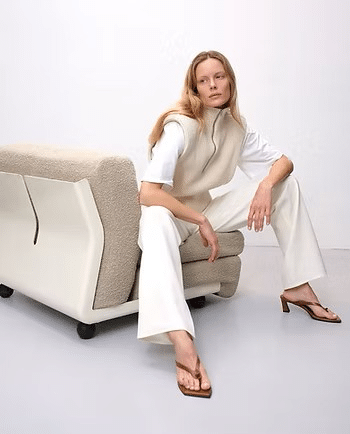Fashion and Beauty Brands Are Moving Away from Large Warehouses, and Boutique Fulfilment Providers Like Freckl Are Seeing the Shift Firsthand
A growing number of fashion and beauty e-commerce brands are transitioning away from large-scale traditional warehouses and towards boutique fulfilment providers, as post-purchase experience and operational flexibility become increasingly important in customer retention.
Sydney-based fulfilment provider Freckl, which specialises in fashion, beauty and lifestyle brands, has been among those experiencing the shift firsthand, onboarding a notable volume of brands previously operating in high-volume general merchandise warehouses.
According to founders of brands that have switched providers this year, traditional 3PL environments designed around palletised freight and standard packing have struggled to accommodate fashion’s distinct logistics requirements including delicate garments, frequent drops, seasonal turnover and custom packaging workflows.
“Across dozens of onboarding conversations this year, the pattern was consistent,” Freckl’s founders said. “Brands that once invested heavily in front-end growth are now refocusing on fulfilment quality and accuracy because of the influence it has on customer loyalty.”
Fashion labels transitioning to boutique fulfilment commonly cited challenges in large warehouses such as:
- limited or costly options for customised, aesthetic packing
- higher error rates during seasonal launches or new-collection drops
- rigid storage layouts unsuitable for hanging garments or beauty products
- difficulty coordinating influencer and PR gifting campaigns
Rather than prioritising sheer shipping speed, many brands described a shift in operational philosophy selecting fulfilment partners that support brand identity, personalisation and adaptability.
Freckl’s model blends warehouse technology, such as AI pick planning and real-time dashboards, with human handling for garment folding, custom wrapping and campaign-specific packing. This hybrid method has resonated with small and mid-sized labels that cannot sacrifice unboxing experience or brand expression in the name of logistics efficiency.
Industry analysts say the trend does not signal a decline in large warehousing overall, but rather a growing segmentation of fulfilment strategies across sectors. General merchandise e-commerce continues to move towards automation and high-volume freight optimisation, while fashion and beauty brands prioritise flexibility, presentation and quality control.
“It’s unlikely that fulfilment will ever return to a one-size-fits-all model,” Freckl’s founders said. “For fashion and beauty labels, operational priorities have become fundamentally brand-driven.”
The shift towards boutique fulfilment is expected to continue through 2026 as competition in direct-to-consumer markets intensifies and customer expectations around delivery and presentation rise.
1. What challenges do fashion and beauty brands face in large traditional warehouses?
Large warehouses often prioritise palletised freight and high-volume workflows, which can lead to higher error rates, limited custom packing options and difficulty managing frequent collection drops or delicate products.
2. Why is fulfilment quality becoming a priority for fashion and beauty brands?
Brands are finding that post-purchase experience now directly impacts repeat purchases. Accurate packing, presentation and delivery consistency play a key role in building loyalty and reducing returns.
3. How does Freckl support brands with seasonal or campaign-based order spikes?
Freckl provides flexible capacity, campaign-specific packing and real-time visibility to help brands scale during launches, gifting campaigns and seasonal peaks without compromising accuracy.
4. Are boutique fulfilment providers more suitable for brands with custom packaging requirements?
Yes. Boutique fulfilment providers like Freckl are equipped to manage personalised wrapping, branded inserts, gift sets and non-standard workflows that are often restricted or costly in larger warehouse environments.
